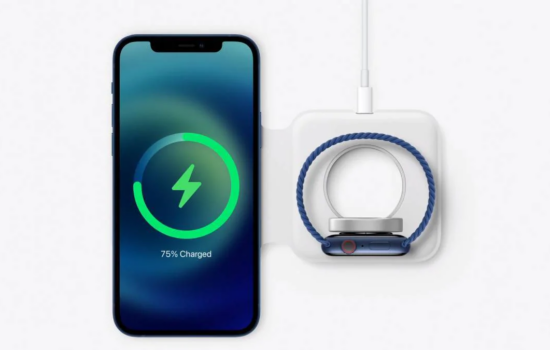Apple’s continuous investment in enhancing the iOS ecosystem has triggered a profound shift in how native apps are built and used. From performance improvements and interface customization to deeper system-level access for developers, the newest wave of iOS updates is radically changing the landscape across industries.
Developers must now adapt to new compliance benchmarks and architectural guidelines, while consumers enjoy better speed, privacy, and feature fluidity.
New Development Standards in the Latest iOS Release
The newest iOS version, iOS 18, mandates native app developers to adopt Swift 6 and embrace concurrency features like structured concurrency using async/await. This upgrade streamlines code execution, allowing smoother animations and more responsive UIs.
Apple’s new architectural enforcement for SwiftData in place of Core Data has increased database performance by 23% in benchmarked test cases. Apps not adhering to the updated SDKs will face App Store rejection beginning in Q4 2025, raising the stakes for developers to migrate quickly.
The Push Toward Privacy-First Architecture
Apple’s privacy updates now include advanced consent management tools integrated at the system level. Developers are required to use the AppTrackingTransparency (ATT) API with new logging policies that show real-time permission status. Apps that fail to update risk delisting from the App Store.
With iOS 18, Apple has introduced a Privacy Nutrition Label validator that flags discrepancies between declared and real-time data usage, helping consumers stay in control of personal information. These measures are forcing developers to rethink backend data architecture with privacy as a design cornerstone.
E-Commerce Platforms Elevate Mobile Shopping
E-commerce giants like Shopify, Temu, and Shein are deploying iOS 18’s new WalletKit features to offer faster checkout using Tap-to-Pay-on-iPhone and facial recognition. Dynamic Island is now leveraged to show order progress in real-time, increasing user retention by 12% across A/B testing pools.
With direct Apple Pay tokenization, transactions are more secure, and compliance with PCI-DSS is automated via native system calls, cutting down overhead for merchants and boosting conversion rates on mobile.
Entertainment Apps Gain Immersive Capacity
Apple’s updates to AVFoundation and SharePlay are driving a richer entertainment experience. Platforms like Disney+, Max, and Paramount+ now support spatial audio syncing across AirPods Pro using device proximity and head tracking.
This feature, combined with frame-perfect synchronization under SharePlay 3.0, has led to a 15% uptick in session duration per user. Interactive features tied to SiriKit also let viewers trigger trivia, cast selection, or camera angle changes with voice commands—enhancing engagement and encouraging longer app dwell times.
Native UI Enhancements Drive User Engagement
The latest updates allow developers to present rich, interactive content directly on the lock screen using Live Activities. Food delivery, ride-hailing, and ticketing apps use this to display ETA, dynamic pricing, or barcode access without requiring users to unlock their devices.
According to internal analytics from major service providers, lock screen widget interactions now drive 28% of re-engagements, a key metric for apps struggling with churn. These enhancements are transforming passive notifications into core engagement tools.
Gaming Apps Reap the Benefits of MetalFX
iOS 18 introduces the MetalFX upscaling engine natively to developers. Games like Genshin Impact and Call of Duty: Mobile are already leveraging this to run 60 FPS with ray tracing support, an unprecedented feat on mobile.
Combined with improved thermal throttling through the Performance State Controller API, average gameplay sessions have increased by 18% in AAA mobile titles. Game developers now report a 40% faster time-to-market for major visual updates thanks to unified shader pipelines and tooling provided in Xcode 16.
Online Gambling Integrates Native Capabilities
iGaming platforms are rapidly embracing native iOS tools to upgrade security and usability. Top casino apps like BetMGM, Caesars Palace Online, and FanDuel Casino now integrate Face ID for KYC (Know Your Customer) and login procedures, dramatically reducing fraudulent account creation by 27%.
The use of Secure Enclave authentication, combined with real-time geofencing using CoreLocation, has led to enhanced legal compliance and smoother onboarding experiences. This push toward native integration not only boosts user confidence but also cuts development costs associated with third-party SDKs.
Ontario, Canada (CA-ON) Regulations and Compliance
Ontario, Canada stands out as a prime example of a regulated iGaming market where compliance and innovation go hand in hand. Ontario’s leading casino apps have quickly adapted to Apple’s latest iOS advancements, using native features to enhance user authentication, geolocation, and responsible gambling tools, setting a high standard for what secure, user-first mobile gambling can look like.
The Alcohol and Gaming Commission of Ontario (AGCO) mandates detailed geolocation precision within city limits and requires transparent user session logs, both of which are now automated using iOS 18’s Location Push Updates and Background Tasks API.
With tools like App Clips and exposure controls in UIKit, operators can offer responsible gambling content without needing a full app download, keeping them aligned with AGCO’s accessibility principles.
Regional Regulations Vary Widely Across Jurisdictions
Different territories impose vastly different rules on gambling and gaming apps. In the United States, states like New Jersey, Pennsylvania, and Michigan allow full-fledged casino apps, while others only permit sports betting or prohibit online gambling altogether. This variability has forced developers to implement geofencing systems using CoreLocation fused with on-device mapping APIs.
In Europe, markets like Germany require real-time data audit logs to be stored on encrypted servers, which has led to increased adoption of Apple’s new App Sandbox compliance modes. Meanwhile, Australia has introduced push notification limits that affect daily active engagement metrics, forcing local operators to pivot toward SMS-based retention campaigns.
Monetization Models Undergo Transformation
Apple’s StoreKit 3 APIs now allow for dynamic pricing, introductory offer control, and regional subscription management. Gambling platforms are using these tools to introduce loyalty tiers with free spins, cashback, or bonus multipliers—dynamically priced according to player activity tracked through HealthKit integrations.
Developers report a 32% lift in user LTV (lifetime value) when they use these native monetization options in tandem with predictive analytics on in-app behavior. This shift also reduces dependency on ad revenue, which is now harder to track under ATT restrictions.
Future-Proofing Native App Strategies
With iOS 19 already in developer preview, future updates will introduce persistent AI agents, deeper CoreML integration, and enhanced developer access to system-wide events via the new ContextBridge API. Gambling and gaming apps are expected to gain automated session warnings using health data and behavioral modeling, improving responsible gaming measures.
Early adopters in the e-commerce space are already using CoreML-embedded sizing suggestions and ARKit-based product testing. The path forward for native apps is clear: tighter integration with iOS frameworks will be the key to market dominance, regulatory compliance, and user loyalty.








